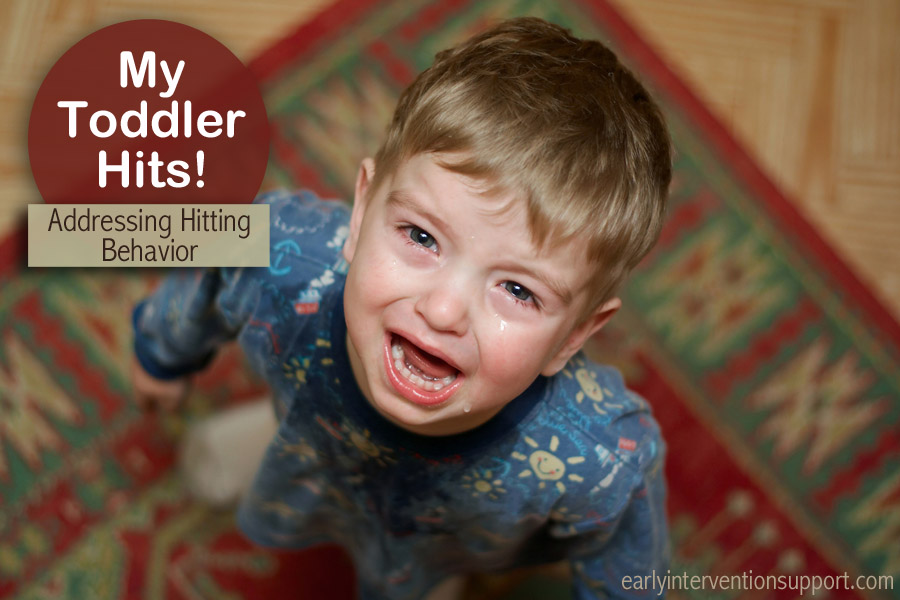We have heard it before: My toddler just started hitting! Rest assured, you are not alone if this is something you have encountered. It is often a “phase” that toddlers may experiment with during interactions or play. However, for some children it could require further investigation as to what may be the cause of this behavior and how to prevent it from worsening.
When I meet with families, I routinely ask, “So, why do you think he is hitting?” Often times, the caregivers have not considered WHY the hitting is occurring. This is of utmost importance to me since I will work with the family to match the intervention to the actual cause (or function) of the hitting behavior.
Addressing Toddler Hitting Behaviors
Hitting behaviors happen for many reasons. One of the most common that I see in my practice is for attention-seeking. Some children might hit peers or loved ones in an effort to gain their attention (even if we might see it as “negative” attention when they hit). If this is the case, we work together to determine replacement behaviors that can take the place of the hitting. Examples of replacement behaviors might include: saying “hi” or “help,” teaching a high-five behavior, gentle touch instead of the hitting, prompting a request for attention, etc.
Let’s say that the hitting is not occurring for attention, and the reason might be more related to escaping demands or undesirable situations (for the toddler). In this instance, we will want to work together to develop escape strategies that can replace the hitting behaviors. Examples of this might be: requesting “all done” when completing a task, allowing the child to have calm time, offering shorter time with strict rules/directives, etc.
In other instances, attention and/or escape are not the functions for the hitting. Each and every instance of the hitting behavior can be assessed and we intervene appropriately. Sometimes, there is a sensory component or an unknown reason. In these cases, we want to meet the needs of the child and be sure to address the hitting in a manner that allows the child to learn what TO do instead of what NOT to do. Using positive directives and teaching strategies will help our children learn what we are asking of them and build a behavior rapport for greater success!

